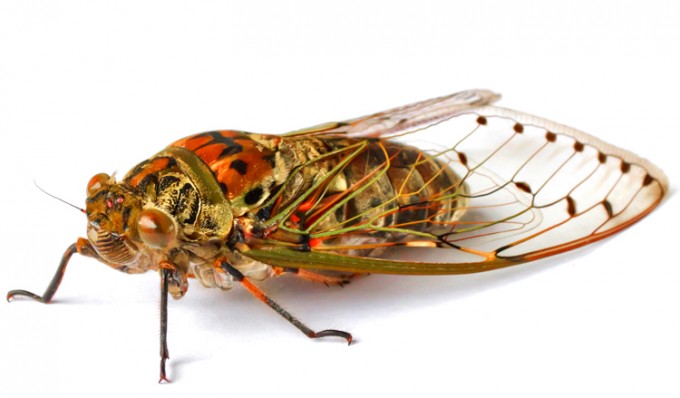| The Soundscape Festival is organised under the auspices of ENALA (European Network for Applied Landart). ENALA is an international project (started 2012) to create a hub for initiatives and stakeholders in rural areas and cultural landscapes from 2012 until 2014. It is coordinated and organized by three project partners of Croatia (Europa Nova Foundation), Germany (Anhalt University of Applied Sciences) and the Netherlands (Stichting Streekfestival Het Groene Woud) and is supported by the EU Culture Programme of the European Union. |
Instruments of Nature: How Cicadas Sing?
Unlike many other insects, cicadas’ “singing” is not based on stridulation (where one structure is rubbed against another); these species have specifically designed, built-in “loudspeakers” in their exoskeleton which makes them one of the loudest insects of the globe. Some species sing at volumes that is painful for the human ear.
The apparatus used by cicadas for singing is complex. The organs that produce sound are called tymbals. Tymbals are a pair of ribbed membranes at the base of the abdomen. The cicada sings by contracting the internal tymbal muscles. This causes the membranes to buckle inward, producing a distinct sound. When these muscles relax, the tymbals pop back to their original position. Scientists still don’t fully understand how this apparatus produces such extreme volume.
Cicadas usually sing during the heat of the day. In Cres, in August, this is pretty much the full daytime. In addition to attracting a mate, the loud noise actually repels birds. The cicada’s song is painful to the birds’ ears and interferes with their communication, making it difficult for the birds to hunt in groups. Male cicadas in the same brood will stick together when calling in order to increase the total volume of noise. This reduces the chances of bird predation for the whole brood.
Even cicadas must protect themselves from the volume of their own singing. Both male and female cicadas have a pair of large, mirror-like membranes called the tympana, which function as ears. The tympana are connected to an auditory organ by a short tendon. When a male sings, the tendon retracts, creasing the tympana so that it won’t be damaged by the sound.
(information via: wikipedia, animal planet)
You must be logged in to post a comment.
![Soundscape Festival, Cres/Osor [HR], 2013](http://soundscape.europa-nova.eu/wp-content/uploads/2013/07/soundscape-fest-v2.png)

Leave a Reply